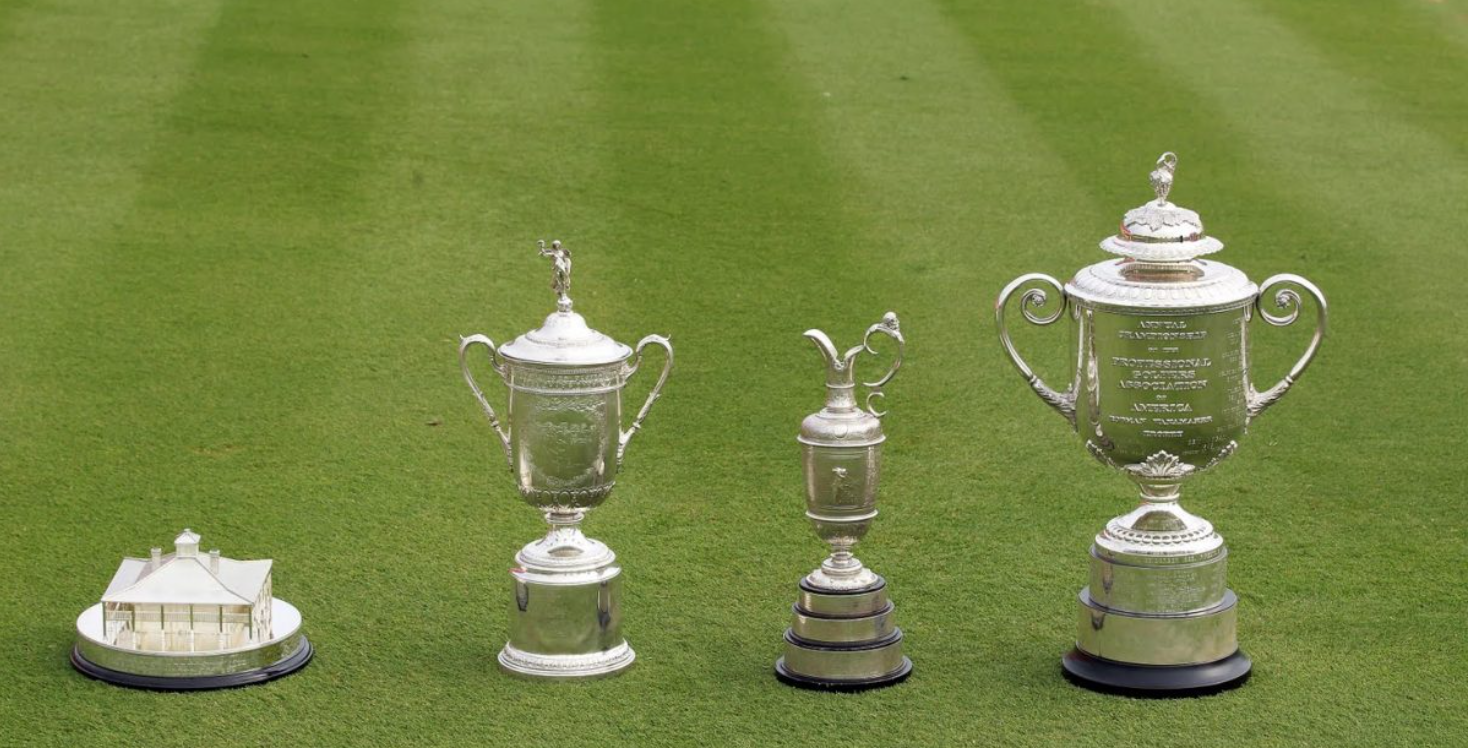Chronological List of Men’s Major Golf Champions
A chronological list of men’s major golf champions is a comprehensive record that details the winners of the four major golf championships: The Masters, U.S. Open, The Open Championship, and the PGA Championship. This enumeration begins from the inception of each tournament, tracing back to the 1860s for The Open Championship, 1895 for U.S. Open, 1916 for the PGA Championship, and 1934 for The Masters. The list is a testament to the rich history of golf, showcasing the sport’s most successful and influential athletes. Each entry signifies a momentous occasion, a triumph of skill, strategy, and determination.
The list includes illustrious names such as Jack Nicklaus, Tiger Woods, and Bobby Jones, players who have etched their names into golfing lore with their multiple major wins. It is a fascinating glimpse into the evolution of the sport, highlighting different eras dominated by various golfing giants. From the early dominance of British players in The Open Championship to the recent international diversity of champions, the list reflects the growing global popularity of golf. The chronological list of men’s major golf champions is not just a record of winners; it is a narrative of golf’s progression, a testament to the game’s enduring appeal, and a tribute to the talents that have graced its greens.

Champions by Year
Every year, different arenas of sports, technology, arts, and other fields crown new champions. These individuals or teams have shown exceptional prowess, skill, and determination, earning them the honor of being named the best in their respective categories for that particular year. The title of ‘champion’ is a highly coveted designation, a testament to the hard work, perseverance, and talent of its bearer.
In sports, athletes and teams compete in rigorous tournaments and competitions throughout the year. The culmination of these events often results in a championship match or game, where the year’s champion is decided. For instance, in football, the annual Super Bowl determines the champion of the National Football League. In tennis, champions are declared at the end of grand slam tournaments like Wimbledon or the U.S. Open.
In the realm of technology, champions are often innovators or organizations that have made significant breakthroughs or contributions in their field. Each year, notable tech publications and organizations recognize these champions, whether it’s a revolutionary new gadget, a game-changing piece of software, or a pioneering startup company.
In arts and culture, a variety of awards and festivals are held annually to honor the champions of different disciplines. For example, the Academy Awards crowns the champions in various categories of filmmaking, while the Grammy Awards do the same for music.
Champions, regardless of their field, embody excellence. They set the bar for what can be achieved, and their accomplishments become a part of history, inspiring future generations to strive for similar success. However, it’s important to remember that being a champion is not just about winning. It’s about the journey, the dedication, and the passion that leads to the pinnacle. Each champion, in their unique way, contributes to the rich tapestry of human achievement, making each year a celebration of progress and accomplishment.
Champions by Player
Champions by Player is an intriguing topic that encapsulates the essence of competitive spirit and individual skill. In any sport or game, it refers to the players who have risen above the rest through their exceptional talent, relentless hard work, and undeniable passion. These individuals have showcased their prowess, displaying unparalleled mastery of the game, often setting new records and establishing themselves as the epitome of excellence. They become the embodiment of their sport, their names synonymous with victory and success.
In the realm of team sports, such as football or basketball, Champions by Player would refer to the stand-out athletes who have displayed extraordinary performance, often leading their teams to victory. They are the players who rise in crucial moments, delivering game-changing plays and exhibiting leadership qualities that inspire their teammates. On the other hand, in individual sports like tennis or golf, these champions are the ones who consistently outperform their competitors, demonstrating superior skills and mental toughness.
However, becoming a champion is not merely about winning games or tournaments. It also involves the ability to overcome adversity, maintain composure under pressure, and exhibit sportsmanship. These champions have the resilience to bounce back from defeat and the humility to learn from their mistakes. They understand that every setback is a setup for a comeback and every failure is a stepping stone to success.
Champions by Player are the role models for aspiring athletes, offering them a glimpse of what they could achieve with dedication and perseverance. They set the standards for performance, constantly pushing the boundaries of what is possible. Yet, they also remind us that while talent is important, it is the heart, determination, and passion that separates a true champion from the rest. They encapsulate the spirit of sportsmanship, demonstrating that while the game is played with the body, it is won with the heart and mind.
In summary, Champions by Player are the epitome of excellence and the embodiment of the competitive spirit. They represent the pinnacle of achievement in their respective sports and serve as an inspiration for future generations.

Historical Overview of Major Winners
The historical landscape of major winners is a fascinating and diverse narrative, encompassing a broad spectrum of fields. This includes the arenas of sports, politics, science, literature, and entertainment. Tracing the trajectory of significant victories throughout history unveils a tapestry of triumphs, setbacks, and groundbreaking moments that have shaped our world. In the realm of sports, iconic figures like Muhammad Ali and Serena Williams have set records and shattered stereotypes. The political domain has seen leaders such as George Washington and Winston Churchill steer their nations through tumultuous times and emerge victorious.
The field of science has celebrated numerous Nobel laureates like Marie Curie, and Albert Einstein, whose revolutionary discoveries have propelled humanity forward. In literature, authors such as William Shakespeare and J.K. Rowling have captivated audiences worldwide, earning them enduring success. The entertainment industry, too, has its major winners, with artists like The Beatles and Michael Jackson reaching unparalleled heights of fame. These major winners, each in their respective fields, have not only achieved personal success but also left indelible marks on history, influencing countless generations and shaping the narrative of progress. Their victories serve as milestones in the ongoing journey of human achievement, highlighting the incredible potential that individuals possess to excel, innovate, and inspire. These victories, both big and small, have collectively paved the way for the future, forever immortalizing these individuals in the annals of history.
Their triumphs continue to inspire, reminding us of the power of perseverance, determination, and ambition. In this historical overview of major winners, we acknowledge the lasting impact of these trailblazers and celebrate their invaluable contributions to our shared history.
Notable Streaks and Records
Notable streaks and records are fascinating elements of sports, games, and various other human endeavors. They provide a benchmark for excellence and offer a challenge for those aspiring to surpass them. One of the most celebrated streaks in sports history is the New York Yankees’ Joe DiMaggio’s 56-game hitting streak in 1941, a record that still stands as a testament to consistency and perseverance. In basketball, the Los good Lakers’ 33-game win streak during the 1971-1972 season remains the longest in NBA history. Meanwhile, in the world of chess, grandmaster Sergei Tiviakov holds the record for the longest unbeaten streak in classical chess, having played 110 games without a loss between 2004 and 2005.
In the realm of entertainment, the television show “The Simpsons” holds the record for the longest-running American sitcom and scripted primetime television series, with over 30 seasons and counting. Similarly, in music, the Beatles hold the record for the most number-one hits on the Billboard Hot 100 chart, a feat that has yet to be surpassed.
Notable streaks and records are not limited to sports and entertainment. The Guinness World Records documents extraordinary achievements in various fields such as science, technology, and human abilities. For instance, the record for the most digits of pi memorized belongs to Rajveer Meena of India, who recited 70,000 decimal places of pi in 2015.
These impressive records and streaks provide inspiration and motivation for individuals to strive for excellence, pushing the boundaries of human potential. They reflect our innate desire for achievement and recognition, serving as a reminder that with determination, hard work, and a bit of luck, it is possible to make history and leave a lasting legacy.

Major Championships – A Closer Look at Each Event
Major Championships in the world of sports are the pinnacle of competition and the ultimate test of an athlete’s skill, endurance, and mental fortitude. These prestigious events offer a closer look at the level of talent, dedication, and training that goes into reaching the top of any given sport. In golf, the four major championships – The Masters, the U.S. Open, the British Open, and the PGA Championship – are the most coveted titles, attracting top players from around the globe. In tennis, the Grand Slam tournaments – Australian Open, French Open, Wimbledon, and U.S.
Open – are the most prestigious, highlighting the best of the sport across various court surfaces. In athletics, the World Championships and the Olympics are the premier events, showcasing a myriad of disciplines from sprinting to marathon running, from high jump to pole vault. Similarly, in professional cycling, the Grand Tours – Tour de France, Giro d’Italia, and Vuelta a España – are considered the most challenging and prestigious races. These events not only highlight the physical prowess of the athletes but also their strategic thinking, resilience, and ability to perform under pressure. Each of these events has its own unique characteristics, rules, and traditions, adding to the allure and excitement for spectators and athletes alike.
Whether it’s the green jacket of The Masters, the clay courts of the French Open, the grueling mountain stages of the Tour de France, or the gold medals of the Olympics, each offers a different challenge and a different path to glory. A closer look at these events reveals the incredible journey of athletes, their struggles, their victories, and their relentless pursuit of excellence. They are a testament to human potential and the inspiring power of sports.
Evolution of the Majors – Changes and Milestones
The landscape of college majors has undergone significant transformation over the years. This evolution is marked by fascinating changes and milestones that reflect the changing needs of society and the job market. In the early days of higher education, the focus was primarily on classical studies, with majors including philosophy, theology, and the classics reigning supreme. However, the turn of the 20th century saw a shift towards more practical and technical subjects such as engineering and the sciences, driven by the Industrial Revolution. This trend continued into the mid-20th century, with the advent of computer science as a major, heralding the digital age.
The late 20th and early 21st centuries saw an explosion of new majors, mirroring the rapidly changing world. Majors such as environmental science, gender studies, international relations, and computer game design emerged, reflecting the growing global awareness, technological advancements, and changing societal norms. Also, interdisciplinary majors have gained popularity, breaking down traditional academic boundaries and encouraging students to approach issues from multiple perspectives.
Another significant milestone in the evolution of majors has been the increased emphasis on experiential learning. More universities are now offering co-op programs, internships, and research opportunities as part of their major programs, recognizing the value of hands-on experience in preparing students for their future careers.
The future of college majors is likely to continue evolving, driven by factors such as technological advancement, social changes, and economic shifts. New majors may emerge, and existing ones may evolve to remain relevant in the ever-changing job market. Despite these changes, the underlying purpose of a college major remains the same: to equip students with the knowledge, skills, and experiences that will enable them to contribute meaningfully to society and thrive in their chosen careers.
